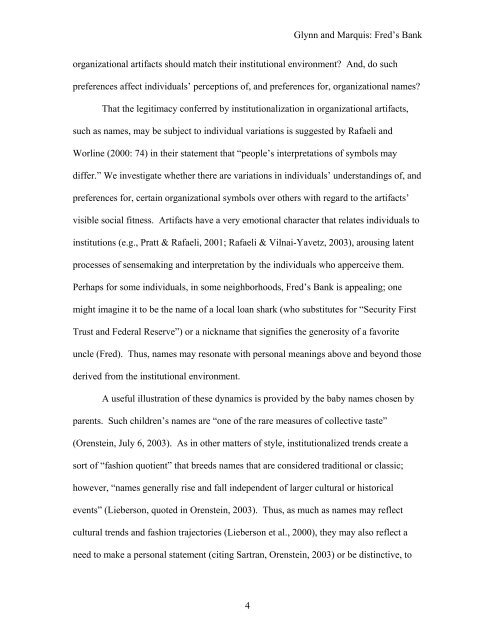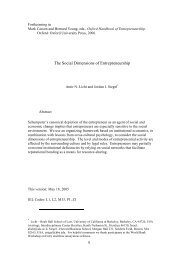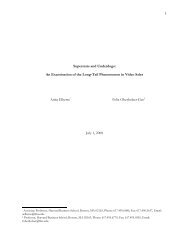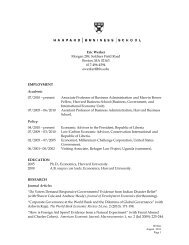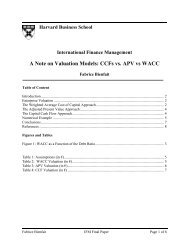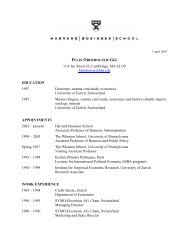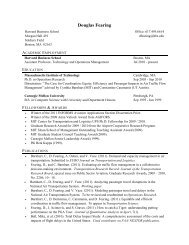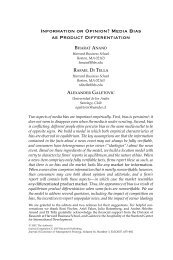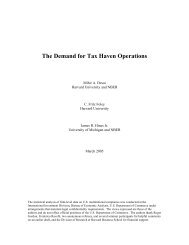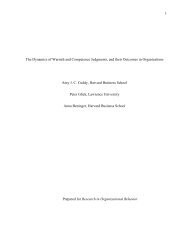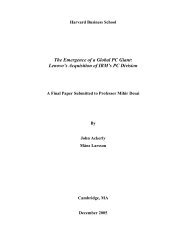FRED'S BANK: HOW INSTITUTIONAL NORMS ... - People. hbs .edu
FRED'S BANK: HOW INSTITUTIONAL NORMS ... - People. hbs .edu
FRED'S BANK: HOW INSTITUTIONAL NORMS ... - People. hbs .edu
Create successful ePaper yourself
Turn your PDF publications into a flip-book with our unique Google optimized e-Paper software.
Glynn and Marquis: Fred’s Bank<br />
organizational artifacts should match their institutional environment? And, do such<br />
preferences affect individuals’ perceptions of, and preferences for, organizational names?<br />
That the legitimacy conferred by institutionalization in organizational artifacts,<br />
such as names, may be subject to individual variations is suggested by Rafaeli and<br />
Worline (2000: 74) in their statement that “people’s interpretations of symbols may<br />
differ.” We investigate whether there are variations in individuals’ understandings of, and<br />
preferences for, certain organizational symbols over others with regard to the artifacts’<br />
visible social fitness. Artifacts have a very emotional character that relates individuals to<br />
institutions (e.g., Pratt & Rafaeli, 2001; Rafaeli & Vilnai-Yavetz, 2003), arousing latent<br />
processes of sensemaking and interpretation by the individuals who apperceive them.<br />
Perhaps for some individuals, in some neighborhoods, Fred’s Bank is appealing; one<br />
might imagine it to be the name of a local loan shark (who substitutes for “Security First<br />
Trust and Federal Reserve”) or a nickname that signifies the generosity of a favorite<br />
uncle (Fred). Thus, names may resonate with personal meanings above and beyond those<br />
derived from the institutional environment.<br />
A useful illustration of these dynamics is provided by the baby names chosen by<br />
parents. Such children’s names are “one of the rare measures of collective taste”<br />
(Orenstein, July 6, 2003). As in other matters of style, institutionalized trends create a<br />
sort of “fashion quotient” that breeds names that are considered traditional or classic;<br />
however, “names generally rise and fall independent of larger cultural or historical<br />
events” (Lieberson, quoted in Orenstein, 2003). Thus, as much as names may reflect<br />
cultural trends and fashion trajectories (Lieberson et al., 2000), they may also reflect a<br />
need to make a personal statement (citing Sartran, Orenstein, 2003) or be distinctive, to<br />
4


